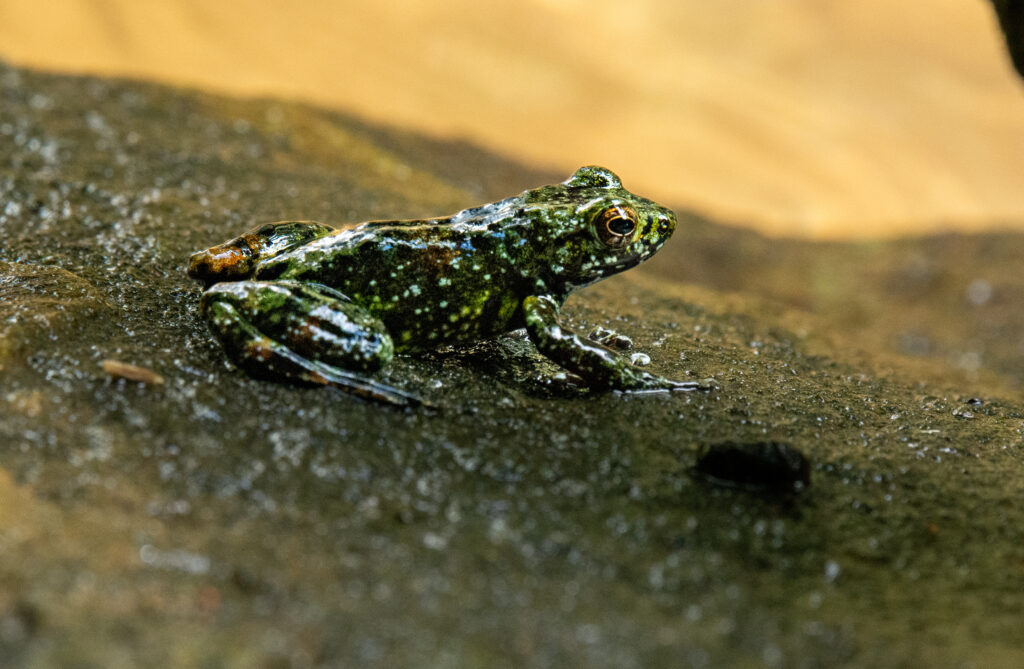The sheer number and diversity of frog species in Madagascar is unlike anywhere else. Just since 1990 new research – large-scale surveys and species inventories – has reached previously unreviewed areas. With this new knowledge the number of documented frog species has increased from 170 to 235 named species and current research is ongoing for another 150 identified species that are not yet named. Strikingly, 100% of the native frogs of Madagascar are endemic, found nowhere else in the world. This all on an island only the size of Texas.
Four families are represented on Madagascar; Hyperoliidae, Mantellidae (most number of species), Microhylidae, and Ranidae (just 1 species). Most scientists expect it to take another 20 years or so to wade through the complex taxonomy of the yet unnamed frog species.
The order Urodela, salamanders, is not represented in Madagascar. Their absence in Madagascar is not surprising. Urodeles mainly occur north of the equator and are lacking in Africa south of the Sahara Desert.
I’m currently working as a research volunteer at Ranomafana National Park, which has a high level of amphibian diversity. The park is only 166 square miles yet hosts 114 frog species. When you page through the 500 page Field Guide to the Amphibians and Reptiles of Madagascar (Glaw and Vences, 3rd edition, 2007) you come away stunned at the range of frog diversity. And how difficult it can be to discern one species from another. Many, particularly those in the Family Microhyladae and Genus Boophis are quite similar to one another, at least to my inexperienced eye.

Matching a species in hand in the field to one in the guidebook takes a detailed process of assessing color patterns, amount of foot or hand webbing, skin texture, length of leg compared to body, occurrence of nuptial pads, and habitat where it is found.
Frogs in Madagascar employ 11 different types of egg laying strategy. In general these include aquatic egg-laying or terrestrial or arboreal. Strategies within these domains include – eggs and tadpoles in ponds or streams, eggs on rocks, eggs in nests, eggs hatching directly to froglets, eggs hatch into tadpoles that drop in water, foam nests on leaves, nests in burrows, etc. You get the idea.
Here are a few that we came across while collecting our data.
Mantidactylus sp cowanii – no common name. Found along fast moving streams. There are quite a few variations and subspecies that are undergoing further research. A common theme.

Gephyromantis boulengeri – Boulenger’s frog. Found on the forest floor.
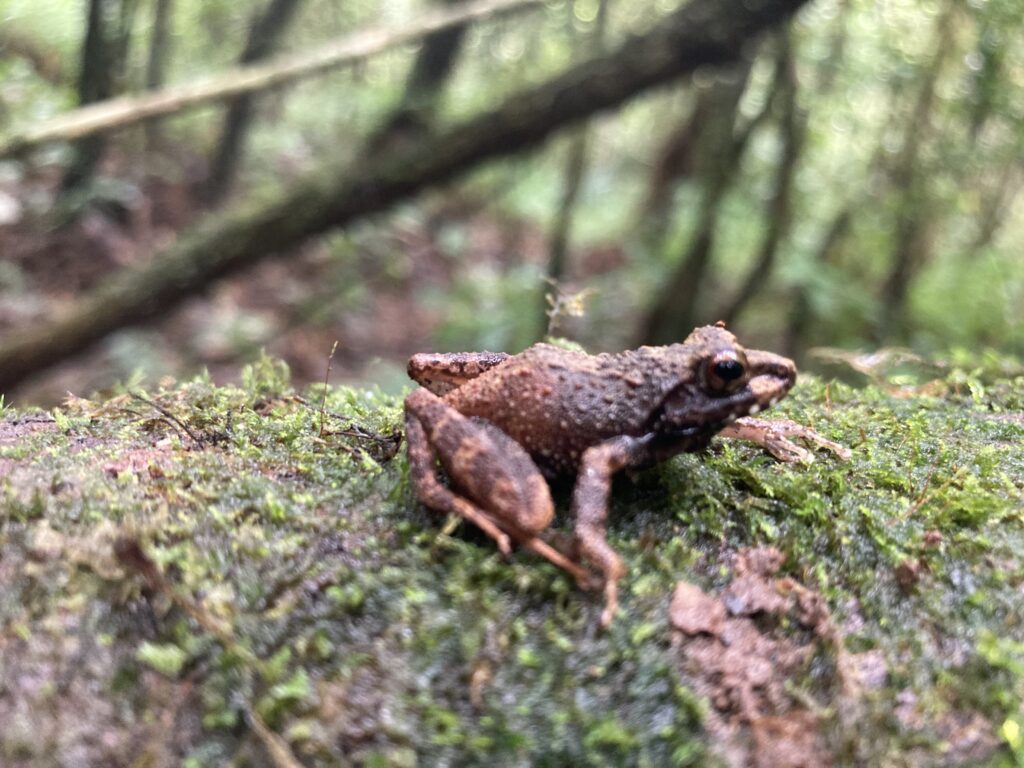
Mantidactylus sp. aff. Cowanii “small”. Ok – that’s confusing. Basically this is a small variation of M. cowanii where the taxonomy is still in question. We found several juveniles along a fast moving creek.

Mantidactylus lugubris – Dumeril’s Madagascar frog. As with many of the Madagascar species, this species color is variable. We found 20 or so of these along fast moving creeks and at the base of a waterfall.

Hetrixalus betsile – Betsalu reed frog. A tiny thing, about as big as my thumb nail. One of the tree frogs that spend their day hiding under or on leaves.
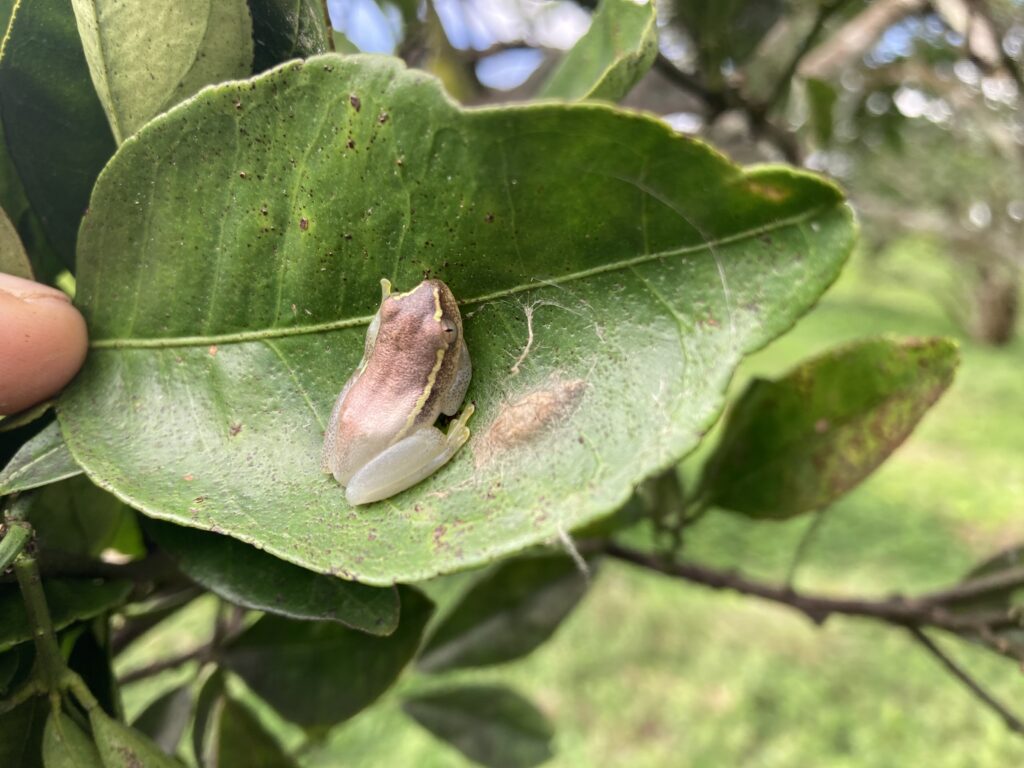
Hetrixalus albogutatus – stary night frog. This is a lovely, small tree frog that during day is a whitish with yellow spots. At night it switches its color background to black with yellow spots.
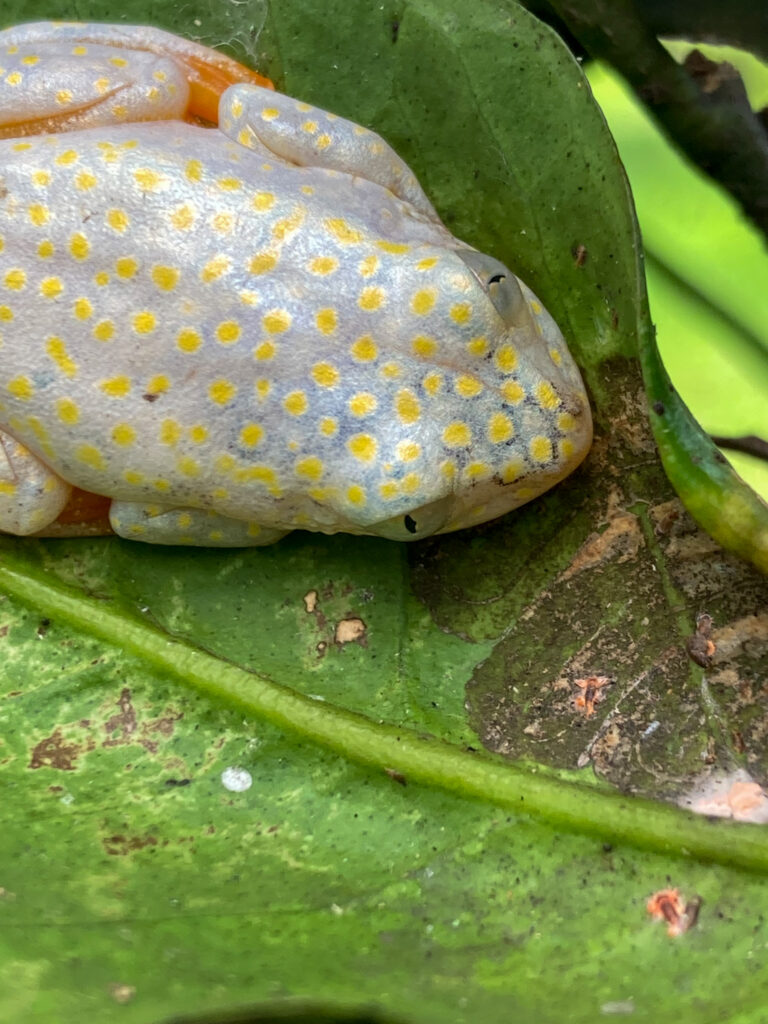
Boophis tephaeomystax – Dumeril’s bright-eyed frog. We found this one sleeping in a tiny bird nest for the day. I’ve enclosed a reference photo and then our field photo. We did not want to disturb the frog for a better photo

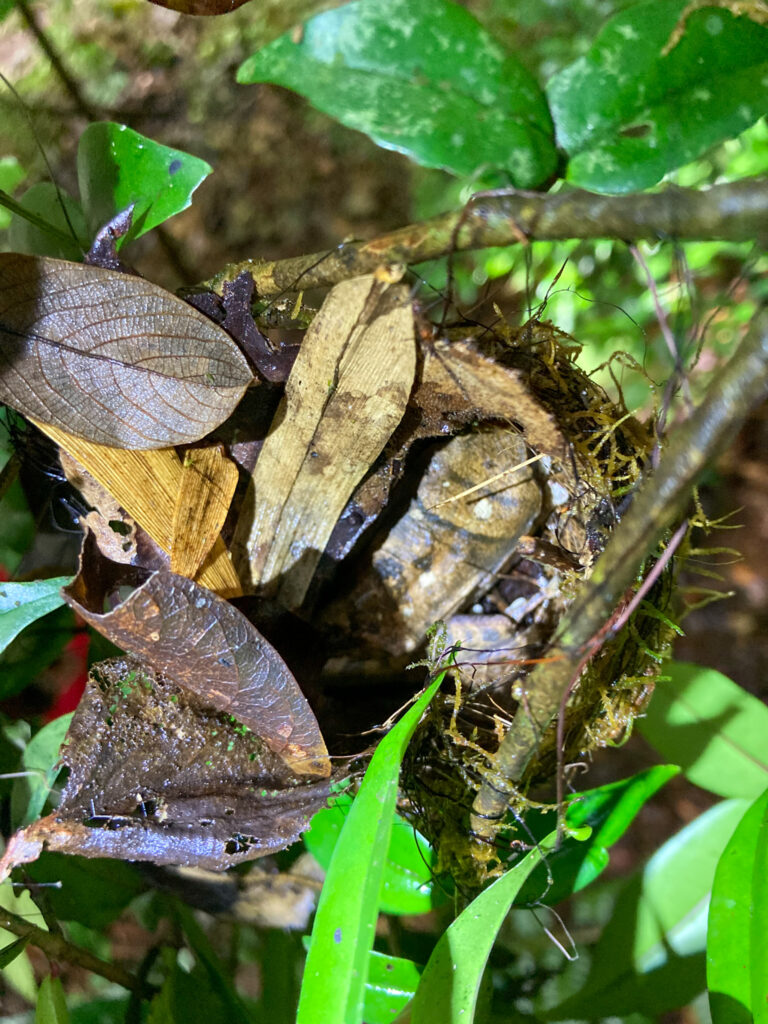
Gephyromantis asper – East Betsileo grainy frog. We found this fellow in a small, rocky stream. Note the granular skin and the supraorbital spikes above his eye.
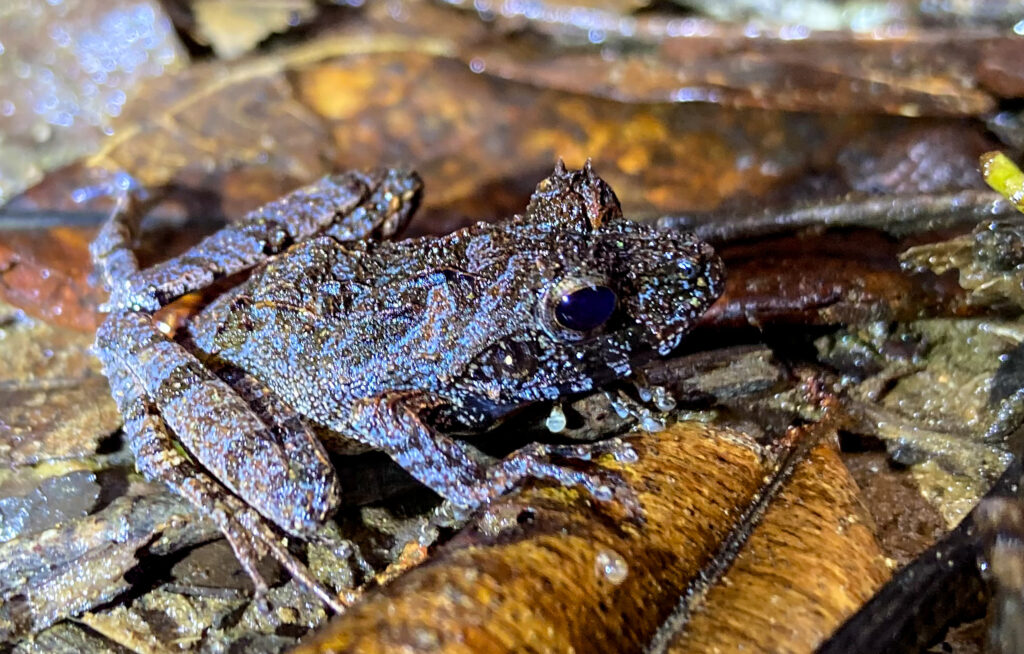
The pandanus frog (Guibentis pulcher) is aptly named as it spends its live among the leaf axils of the pandanus plant. Eggs are laid on the leaves in a gelatineous mass. Tadpoles develop within this mass and emerge as froglets, quickly moving down to the plant center for safety.
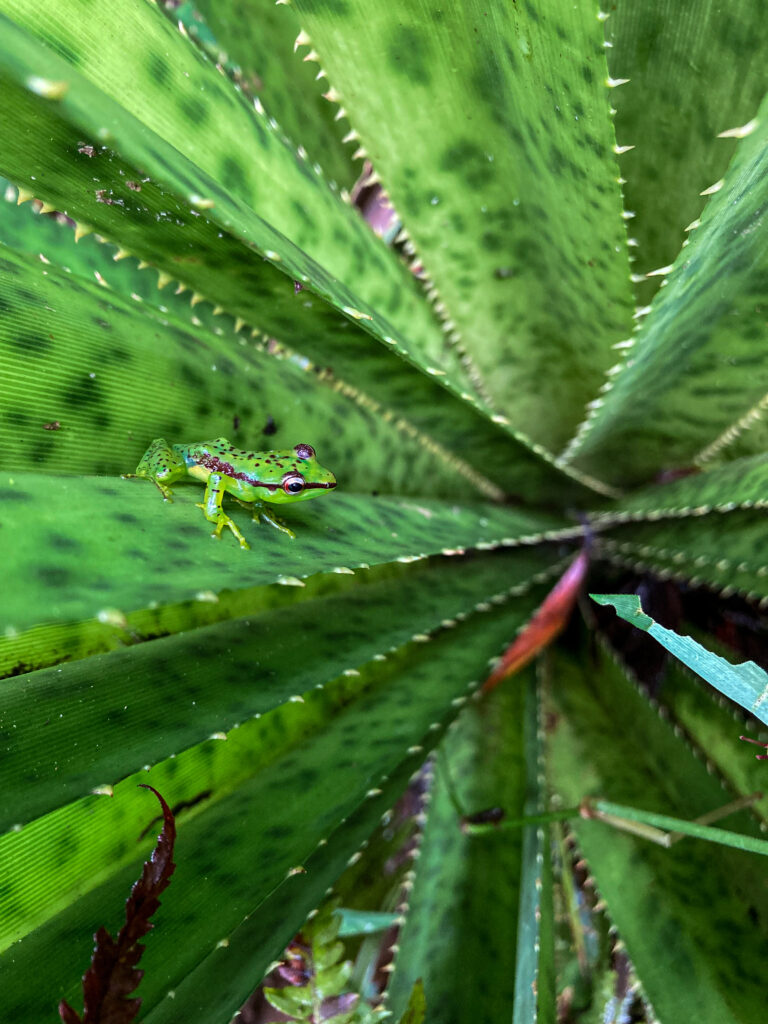
The Ivohimanita Madagascar frog (Mantidactylus majori) is fully aquatic with the full foot webbing to prove it. Clutches of 15 eggs are laid on leaves overhanging streams. Interestingly, at night the males will sit on the eggs, guarding them. Tadpoles drop into the stream when developed.

The Betsileo Madagascar fro (Mantidactylus betsileanus) is a common from of mid-elevation rainforest that tolerates disturbed areas. It is grayish-brown with granular skin and well developed dorsal-lateral folds
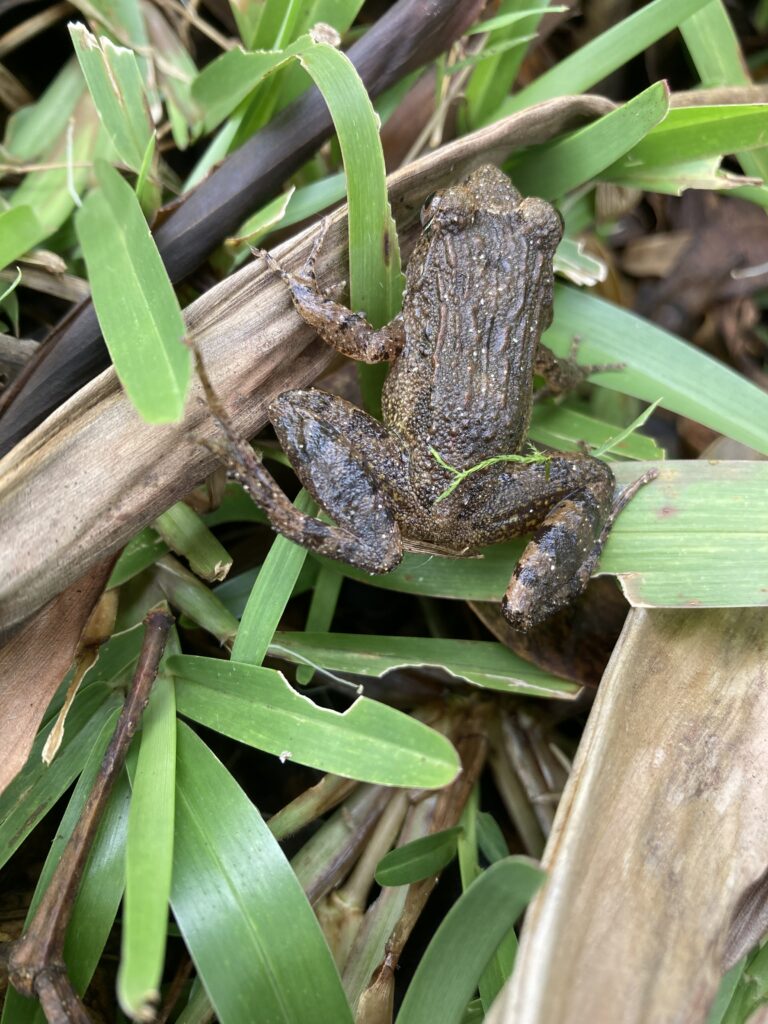
The eastern Madagascar frog (Mantidactylus melanopleura) is found on the forest floor near streams. It has a distinct strip on the on the head that meets the nostril

